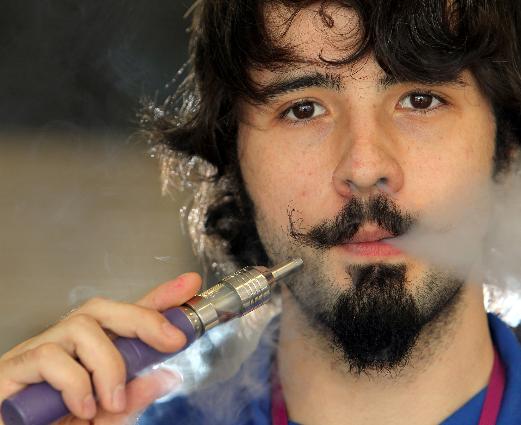Our View: Do more to keep e-cigs, youths apart
The Times Editorial Board, SC Times
Surveys of Minnesota and U.S. youth show alarming increase in e-cigarette use. Lawmakers can slow this increase by immediately acting to limit access.
Two surveys released the past week — one state and one national — deliver a powerful message about the most pressing issue regarding e-cigarettes:
Government needs to lead a stronger charge to keep them out of the hands — and bodies — of minors.
To this point, most of the e-cigarette debate has been about whether e-cigarettes — which electronically convert liquid nicotine into vapor to be inhaled — are as harmful as traditional tobacco and secondhand smoke.
That debate has raged for years, even decades. A resolution seems months, or more likely, years away.
What’s more pressing to resolve — as evidenced by two surveys of youths’ nicotine use — is slowing the fast-rising number of minors who are trying these devices.
How fast?
The 2014 Minnesota Youth Tobacco Survey released Monday found 28 percent of high school students have tried e-cigarettes. On Thursday, the Centers for Disease Control and Prevention reported 4.5 percent of high school students nationally used e-cigarettes regularly in 2013 — triple the percent from 2011. Equally disturbing: 12 percent of U.S. high school students and 3 percent of middle-schoolers had tried them at least once.
And remember, e-cigarettes have been widely available in America for only about seven years.
Such findings make it clear e-cigarettes hold potential for creating countless new generations with unhealthy and high rates of nicotine addiction.
Hasn’t America learned enough hard lessons from 50 years of tobacco-based nicotine addiction to know it needs to snuff out that potential now instead of waiting for more research?
Ultimately, there is no debate that nicotine is a potent, addictive drug. E-cigarettes are simply a delivery mechanism.
So lawmakers should act now to keep the drug and the delivery system out of the hands of minors.
An easy decision is to enact a federal ban on selling minors e-cigarettes, “e-juice” and related products. Minnesota is one of about 35 states with such bans. However, sales via the Internet still provide youth access.
Another important step is to apply the same rules to the marketing of e-cigarettes that are applied to traditional tobacco.
After all, even a cursory glance at products and advertising makes it clear many producers are targeting youth. Think everything from trendy-looking e-cigarettes (and accessories) to bubble-gum flavored e-juice.
Finally, there is merit in increasing the taxes paid on all e-cigarette products.
Such an approach proved successful in reducing youth use of traditional tobacco. And it might even dissuade adults from nicotine addiction.
Again, too much of the debate about whether and how to regulate e-cigarettes remains focused on comparisons to traditional tobacco.
Seeing how e-cigarettes are gaining traction among youth, the focus needs to shift to keeping these nicotine-delivery devices out of their hands — at least until they are legal adults.
http://www.sctimes.com/story/opinion/2014/11/16/view-keep-e-cigs-youths-apart/19089759/



